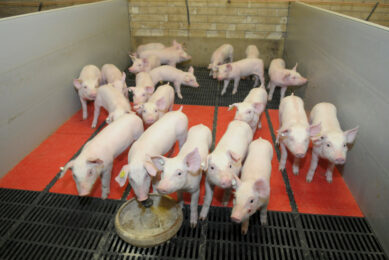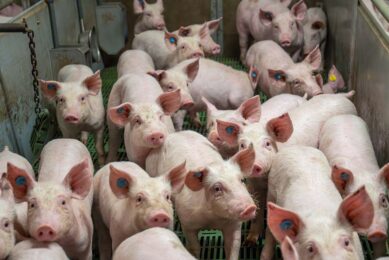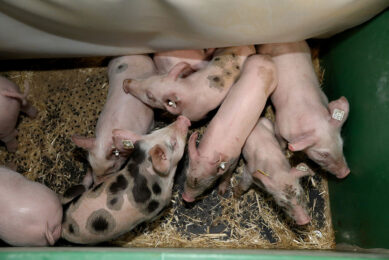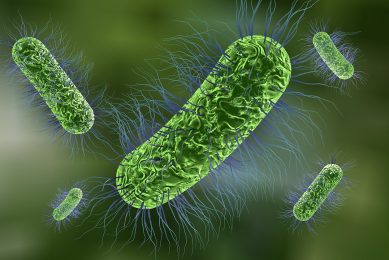Streptococcus and campylobacter key biomarkers in diarrhoeic piglets
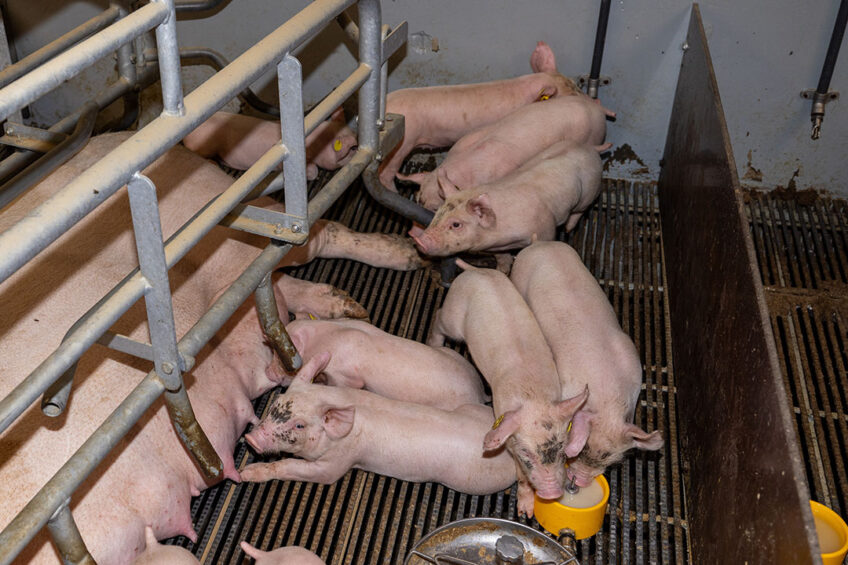
Chinese researchers recently used 16S rRNA gene sequencing to investigate the fecal microbial structure of piglets with diarrhoea to identify the key groups responsible for the imbalance of their gut microbiota.
Post-weaning diarrhoea leads to retardant growth, loss of production performance, and in the worst case, death. Gut microbiota assist digestion, maintains normal functions of the gut mucosa, and protect against pathogens. During weaning, the loss of gut microbiota within the mucus layer protecting the epithelium may lead to diarrhoea.
Data collection
The research team seleced 4 diarrhoeic and 4 healthy piglets that were exclusively sow-reared and weaned at 25 days. They collected 8 fecal samples and euthanised the piglets after blood collection. 2 gut sections, including jejunum and colon, were dehydrated and embedded in paraffin for gut morphology evaluation. In addition, the team measured concentrations of plasma physiological parameters. They also processed the fecal samples for bacterial genomic DNA extraction, and 16S rRNA gene sequencing to identify the diversity and composition of fecal bacterial communities in the diarrhoeic and healthy piglets. Lastly, they performed a correlation analysis among plasma physiological parameters, differential microbiota, and differential metabolites to evaluate potential functional interactions.
Gut morphological structure and hematological indices
The team found that the jejunum and colon of diarrhoeic piglets showed abnormal morphology associated with gut mucosal injury. This included gut villus truncation, atrophy, and exfoliation. In addition, the plasma content of diamine oxidase, endotoxin, cortisol, and noradrenaline were higher in diarrhoeic piglets.
Gut microbial diversity and composition
The most prevalent phylum in the feces of both healthy and diarrhoeic piglets were firmicutes, followed by bacteroidetes, fsobacteria, proteobacteria, and actinobacteria in the healthy piglets. At the family level, streptococcaceae, prevotellaceae, ruminococcaceae, lachnospiraceae, muribaculaceae, and fusobacteriaceae were the dominant bacteria in the healthy piglets.
In the diarrhoeic piglets, campylobacteraceae and peptostreptococcaceae were most dominant. On the other hand, the phylum bacteroidetes, gemmatimonadetes, the genus parabacteroides, oribacterium, and revotellaceae exhibited decreased relative abundance in diarrhoeic piglets. At the species level, streptococcus macedonicus, treponema porcinum, rumen bacterium NK4A214, and novosphingobium resinovorum were more abundant in healthy piglets. Acidobacteria bacterium LWH4 and corynebacterium xerosis were more abundant in diarrhoeic piglets.
In diarrhoeic piglets, the increase in the abundance of campylobacter was associated with the decrease in the abundance of streptococcus
Metabolic differences of fecal microbiota
Weaning stress alters the gut microbial metabolic profile and results in variable levels of metabolites, potentially contributing to gut microbiota dysbiosis post-weaning. In addition, this research study showed that an elevated level of spermidine, a metabolite that connects directly with amino acid metabolism, was associated with the relative abundance of campylobacter, thus exerting a key role in piglet diarrhoea.
Relationship between microbiota, metabolites, and hematological indices
In diarrhoeic piglets, the increase in the abundance of campylobacter was associated with the decrease in the abundance of streptococcus. macedonicus, treponema porcinum, prevotellaceae and lachnospira. On the other hand, the team linked the increase in the abundance of campylobacter to the increase in the concentration of plasma physiological parameters. Furthermore, an increase in spermidine decreased indole and indole derivatives but increased creatine, spermine, glycine, and diamine oxidase, endotoxin, cortisol, and noradrenaline in plasma. Whereas the increase in the abundance of streptococcus macedonicus, rumen bacterium NK4A214, oribacterium, and lachnospira correlated with a decrease in diamine oxidase, endotoxin, cortisol, and noradrenaline in plasma.
Conclusion
The authors concluded that streptococcus macedonicus and campylobacter may be key biomarkers in diarrhoeic piglets. These findings may provide some theoretical references for prevention or treatment of post-weaning diarrhoea.



